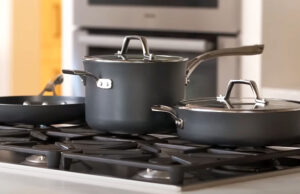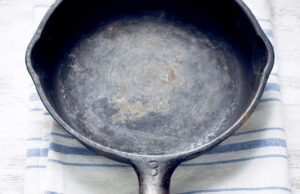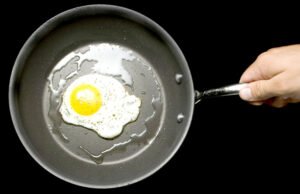As an Amazon Associate, I earn from qualifying purchases at no extra cost to you.
Neff Dishwasher Error Codes: Easy Ways to Fix Them Fast
If your Neff dishwasher is showing an error code, don’t panic. Most codes are easy to fix yourself. First, check the water supply, filters, and door latch. Many times, a simple reset or cleaning solves the problem quickly. In this article, you will learn practical ways to understand and fix Neff dishwasher error codes so your dishes stay sparkling clean. Let’s make your dishwasher work like new again.
Checking the Water Supply and Pressure
The first thing to do when an error code appears is check the water supply. A low or blocked water flow often triggers errors. Make sure the tap is fully open. Look for kinks in the hose that could slow water down.
Sometimes the dishwasher doesn’t get enough pressure. This happens if other taps are running or if the filter in the water inlet is blocked. Clean the filter carefully and check if the water flows freely. You can also run a short cycle to see if water fills properly.
If the water inlet valve is faulty, it may need replacement. Look for leaks or unusual noises near the valve. Sometimes shaking it gently shows if it’s stuck. If you notice damage or the dishwasher keeps showing the code after cleaning, it might be time to call a professional.
Always reset the dishwasher after checking. Turn it off for a few minutes and then back on. Many errors disappear after a simple restart. Regularly checking water flow can prevent these codes from coming back.
- Make sure the tap is fully open
- Check hoses for kinks or blockages
- Clean the inlet filter
- Inspect the water valve for damage
- Reset dishwasher after checking
Cleaning and Inspecting the Filters
Dirty filters are one of the main causes of error codes. Check the bottom of the dishwasher for the filter basket. Remove it and rinse under running water. Small bits of food or soap can block it and prevent proper water circulation.
Check the fine mesh filter as well. Sometimes grease or tiny debris sticks inside. A toothbrush works well to scrub gently. Make sure every part of the filter is clean before putting it back. You can also check the sump area under the filter for any hidden dirt or small objects.
If you skip cleaning filters, your dishwasher may struggle and show repeated errors. This not only slows the cycle but can also damage the motor. A clean filter ensures water flows properly and dishes come out clean.
Clean filters every few weeks if you use the dishwasher often. Keep an eye for unusual smells or standing water, as they can indicate filter issues. Reset the dishwasher after cleaning to make sure the code goes away.
- Remove and rinse filter basket
- Scrub fine mesh filter with toothbrush
- Check sump area for debris
- Clean filters regularly
- Reset dishwasher after cleaning

Checking and Fixing the Door Latch
A loose or broken door latch often triggers error codes. If your dishwasher thinks the door isn’t closed, it won’t start. Open and close the door firmly and listen for a click. The latch should feel secure, not wobbly.
Look at the latch carefully for cracks or damage. Sometimes soap or grease makes the latch sticky. Wipe it with a damp cloth to remove any buildup. If the latch feels weak or damaged, replacing it is usually simple and inexpensive.
The door sensor works with the latch. If the latch is fine but the code remains, the sensor might be dirty or stuck. Gently clean it with a cloth and test the door again. Many times, this small fix solves the problem quickly.
Always test the dishwasher after checking the latch. Close the door slowly and start a short program. If it runs without error, you know the latch and sensor are fine. Regular checks can prevent sudden interruptions during a cycle.
- Ensure door closes with a click
- Clean latch with damp cloth
- Inspect latch for damage
- Check door sensor
- Test dishwasher after inspection
Resetting the Dishwasher Properly
Many Neff dishwasher error codes disappear after a proper reset. To reset, turn off the dishwasher at the main switch. Wait at least five minutes before turning it on again. This allows the electronics to clear temporary glitches.
Some models have a special reset button or a combination of buttons. Check your user manual for details. Press the correct buttons firmly until the display clears. Then start a short cycle to see if the error is gone.
Resetting is useful after cleaning or fixing small issues. Even if the problem seems solved, a reset helps the machine start fresh. It’s like giving your dishwasher a quick nap before it works hard again.
Keep in mind that frequent errors may need more than a reset. If the same code appears repeatedly, look for a deeper problem like a broken part or wiring issue. Regular resets after maintenance keep your dishwasher running smoothly.
- Turn off dishwasher at main switch
- Wait at least five minutes
- Press model-specific reset buttons
- Start a short cycle to test
- Reset after maintenance or fixes
Checking the Drain and Pump
A blocked drain or faulty pump can cause many error codes. First, check the drain hose for kinks or clogs. Remove it if needed and flush it with water. Standing water in the dishwasher often signals a drainage problem.
Look at the pump area under the filter. Small objects like bones, glass, or food pieces can block the pump impeller. Gently remove anything stuck. Make sure the pump spins freely before putting everything back.
Sometimes the pump motor wears out. If it makes strange noises or doesn’t move water, it may need replacement. Even a partially blocked pump can trigger error codes. Regular cleaning prevents bigger issues and keeps water draining quickly.
Always test the dishwasher after checking the drain and pump. Fill it with water and run a short program. If water drains properly and the code disappears, the problem is solved. This simple check avoids expensive repairs later.
- Inspect drain hose for kinks or blockages
- Check pump for debris
- Ensure pump spins freely
- Replace faulty pump if needed
- Test drainage after cleaning
Checking Electrical Connections
Loose or damaged wires can trigger error codes. First, unplug the dishwasher before touching anything. Then, look at all connections inside the door and near the control panel. Wires should be secure and free of corrosion.
Check the connectors for signs of wear. Sometimes wires wiggle loose due to vibration. If you see corrosion, gently clean the metal contacts with a soft cloth. Reattach all connections firmly. This often solves communication errors between components.
Faulty sensors or control boards also cause error codes. If cleaning connections doesn’t work, the electronic parts might need inspection. A professional can test voltage and replace parts safely. Avoid using the dishwasher until electrical issues are fixed.
Regularly checking connections prevents sudden failures. Even a small loose wire can stop the machine from working. Combine this with regular cleaning and resets for long dishwasher life.
- Unplug dishwasher before checking
- Inspect wires and connectors
- Clean corrosion if found
- Check sensors and control board
- Ensure everything is secure
Final Thoughts
Neff dishwasher error codes can be frustrating, but most are easy to fix. Check water, filters, door latch, drain, and electrical connections first. Resetting the machine often solves temporary errors. Simple maintenance prevents repeated codes. With these six practical tips, your dishwasher can stay reliable and your dishes sparkling clean.
| Error Code | Possible Cause | Easy Fix |
|---|---|---|
| E01 | Water fill issue | Check tap and inlet filter |
| E02 | Drain problem | Clean drain hose/pump |
| E03 | Heating issue | Reset and check wiring |
| E04 | Door not closed | Check door latch |
| E05 | Overflow | Check water level and float switch |
| E06 | Sensor error | Clean sensors and connections |
Frequently Asked Questions (FAQs)
Is it safe to clean the dishwasher myself?
Yes, it is safe if you turn off the power first. Remove the filters, check hoses, and clean the pump carefully. Avoid touching electrical parts directly. Use gentle cleaning tools like a soft brush or cloth. Most cleaning tasks are easy and prevent bigger problems. If you feel unsure about wires or sensors, ask a professional.
Can I use the dishwasher if an error code appears?
It is not recommended. Most error codes indicate a problem that could worsen if ignored. Using the dishwasher may cause leaks, poor cleaning, or damage. First, check the water supply, filters, and door latch. Then reset the machine. Only use it again when the code disappears.
Do I need a professional for all error codes?
No, not all codes need a professional. Many codes are caused by simple issues like blocked filters, hoses, or door latches. You can fix these yourself with basic tools. However, electrical problems or broken pumps should be checked by a professional for safety.
Is it necessary to reset after every fix?
Yes, a reset helps the dishwasher clear old errors. It allows the electronics to restart properly. After cleaning filters, fixing latches, or checking drains, resetting ensures the machine works correctly. Without a reset, the error code may stay on even if the problem is solved.
Can error codes come back after fixing?
Yes, codes can return if the issue is not fully solved. For example, a partially clogged filter or loose wire may trigger the same code later. Regular maintenance like cleaning filters, checking hoses, and testing the door latch prevents recurring errors. Resetting also helps avoid repeated codes.
Do I need special tools to fix the dishwasher?
Most fixes require only simple tools like screwdrivers, pliers, or a cloth. You may need a small brush to clean filters or connections. Only for electrical parts or pumps, you might need multimeters or replacement parts. Simple maintenance is easy and usually does not need special tools.
Is it normal for the dishwasher to make noise after fixing?
Yes, some noise is normal. After cleaning or replacing parts, the dishwasher may sound different at first. The pump and water flow may take a short time to settle. If the noise is loud or unusual, check the pump and hoses for objects or loose connections.
Can I prevent error codes in the future?
Yes, regular maintenance helps. Clean filters every few weeks, check hoses for kinks, and wipe door latches. Reset the dishwasher occasionally and inspect electrical connections. Using the correct detergent and not overloading the machine also reduces errors. Small steps prevent most common codes.




